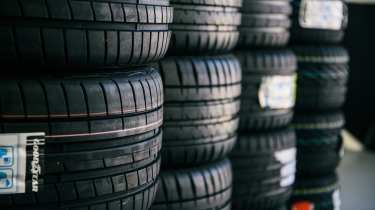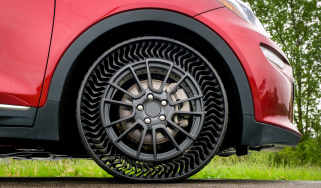New EU rules will make worn tyres perform better, potentially saving motorists £6 billion
400 million tyres per year are replaced before reaching the legal limit for tread depth, but new EU regulations will make tyres safer right down to 1.6mm

When it comes to tyres, it’s generally recommended to replace them depending on age and condition rather than waiting for them to wear down to the legal tread depth limit. That advice could be about to change, however, with a new EU regulation dictating that worn tyres must meet the same wet braking standards as new ones.
The regulation comes into force this month, and means that motorists can be confident in the safety and performance of their tyres right down to the 1.6mm limit for tread depth. In a study, Michelin found that 50 per cent of tyres are removed before the tread has worn below 3mm, and the new ruling could see motorists benefiting from improved tyre longevity and less frequent replacements.
In Europe, the ruling could see demand for new tyres reduced by 128 million units per year, leading to a CO2 reduction of 6.6 million tons. This translates to an approximate saving of £6 billion for European motorists every year.
Globally, Michelin estimates that 400 million tyres are removed prematurely, resulting in excess CO2 production of 35 million tons – similar to the emissions from New York over a six-month period.
At present, European authorities measure the distance required for a vehicle on new tyres to slow from 50mph to 12mph on a road with 1mm of surface water. The revised rules will ensure that the same standards are met across a tyre’s entire lifespan, making consumers less likely to opt for new rubber prematurely.
Speaking to evo, Michelin Technical Manager Brian Porteous explained that the new requirements for worn tyres won't necessarily be achieved at the expense of other elements of tyre performance. 'I can't pinpoint a particular attribute that will suffer to improve worn wet weather performance', he said. 'But the balance between the attributes of a tyre will be tuned. Tyres are always developing anyway – it's just that this new regulation sets us a target, and makes that progress more visible'.
Whether these more stringent performance standards will result in increased purchasing costs for new tyres remains to be seen. Another uncertainty is their application in the UK, although any tyres sold with EU labels will offer the longevity benefits – so long as their four-digit date code confirms they are newly produced.



